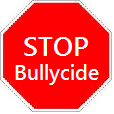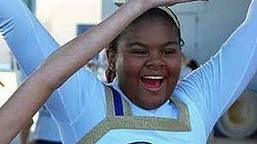 Bully, Bullying, Cyberbullying, and Bullycide – These four words continue to appear with ever greater frequency in the lexicon of the modern American family. We hear these words on the evening news, we read these words in our newspapers, and online in all forums. We live in 2011, but to see how we treat one and other from afar, you’d think perhaps the calendar had rolled back a few centuries. You see – individuals be they young or not-so-young are bullied both at school and at work. The tragedy is, our youth of today, by and large are not prepared for today’s always-on world, even though they live it 24/7. The fact that in 2010 we lost 34 children where bullying was a principal issue in their decision to end their lives speaks volumes. There were 33 who committed suicide. Then there was one young man who was killed while trying to extricate his sibling from two bullies who were pummeling his sibling, he was shot and killed. Each of them has a story, I share these below. But before we get to the individual stories, I’d like to share a bit about how we can, collectively take a step (or two) to address bullying.
Bully, Bullying, Cyberbullying, and Bullycide – These four words continue to appear with ever greater frequency in the lexicon of the modern American family. We hear these words on the evening news, we read these words in our newspapers, and online in all forums. We live in 2011, but to see how we treat one and other from afar, you’d think perhaps the calendar had rolled back a few centuries. You see – individuals be they young or not-so-young are bullied both at school and at work. The tragedy is, our youth of today, by and large are not prepared for today’s always-on world, even though they live it 24/7. The fact that in 2010 we lost 34 children where bullying was a principal issue in their decision to end their lives speaks volumes. There were 33 who committed suicide. Then there was one young man who was killed while trying to extricate his sibling from two bullies who were pummeling his sibling, he was shot and killed. Each of them has a story, I share these below. But before we get to the individual stories, I’d like to share a bit about how we can, collectively take a step (or two) to address bullying.
In my recent pieces, “Bullycide: How many are too many?” and “Every day is worth living” I included my call to action for parents, educators, and communities as a whole to address the ever-increasing instances of bullying in our society. My sincere hope is that we may collectively reduce to zero the number of children who meet their demise due to bullying, by changing the way we address bullying. This requires far more than just laws and rules – this requires our collective action. There are three sides of the equation: Those who bully; Those who are bullied; and Those who stand by and watch the event.
My call to action:
- Encourage your children to accept who they are, and be all they can be with the capabilities given to them.
- Direct your young on appropriate use of the Internet as a tool of collaboration, knowledge sharing and commerce, and not as a tool of hate.
- Make it your business to know and understand the many ways in which your child is engaging online and communicating – Smartphone, laptop, Xbox or wii and where: your house, your neighbors, the library, etc. Then monitor this activity. I’ve often said, it is not espionage to know who and what your child is being exposed to online or via any other communications medium.
- Teach your young how to cope when overwhelmed and how to discuss this with you.
- Ensure your child understands mistakes are universal, and unless it stops the sun from rising in the morn, you and they can work through the perceived error.
- Show your child how to report and confront bullying and call it out as wrong. Show them how to do this in a non-confrontational, but direct manner. To be a silent witness is to endorse the action.
Negative behavior impacts all of our children, the children identified below are not of one religion, nor are they uniform in their sexual orientation, nor will you find them to be of the same age, nor geographically centralized, or of the same economic strata. Bullies exist everywhere in today’s society and thus bullying knows no boundaries. Bullying can however be addressed and in fact obviated. As I said above in my call to action, if we can nip the “drive” to bully, then we stand a chance in creating not only better members of our communities, we will no doubt save lives while we are at it.
Though I am but a lay person when it comes to behavioral studies, I early on called out the connection between bullying and suicide. I recently came across an article in a recent psychiatric Times, “Bullying and Suicide” (see link below in resource section) the authors concluded:
Whether by traditional means or via cyberspace, bullying and peer victimization puts adolescents at increased risk for suicide, especially when comorbid psychopathology is present. Longitudinal studies have just started to be published, and this research field needs to be further developed. In the meantime, findings from cross-sectional studies suggest differential risk profiles by sex as well as by the frequency and severity of the bullying. Female bullies are at increased risk for suicide, even when their bullying is infrequent. Males appear to be at increased risk for suicidal ideation, but only when they are bullied frequently. Bullying and peer victimization lead to suicidal ideation and suicide attempts, but this association varies by sex and may be mediated by depression or conduct problems.
I then came across another piece in Child Development, “The Impact of Enhancing Student’s Social and Emotional Learning” (see link below in resource section) which found value in Social Emotional Learning (SEL) programs in our schools and the improvement in both social interaction as well as in academics.
In addition to person-centered explanations of behavior change, researchers have highlighted how interpersonal, instructional, and environmental supports produce better school performance through the following means: (a) peer and adult norms that convey high expectations and support for academic success, (b) caring teacher–student relationships that foster commitment and bonding to school, (c) engaging teaching approaches such as proactive classroom management and cooperative learning, and (d) safe and orderly environments that encourage and reinforce positive classroom behavior
We need to invest in our children. I firmly believe programs such as those offered by SocialSmarts™which address the need for improved social skills with our children is a good proactive step, coupled with social media/network awareness, meshed with online safety and security tools, will go a long way toward reducing the instances of bullying. In 2010, we failed 34 children. How many will we lose in 2011? (As of 21 February 2011 – we have lost seven children whose suicide is directly related to their being bullied – i.e. they are victims of bullycide).
Please take a moment and visit with each of the 34.
|
||
Resources:
My most recent pieces on the topic of bullying, bullycide and cyberbullying.
American Bar Association resolution addressing Bullying and Cyberbullying
Every day is worth living (originally a guest blog at Social Smarts)
Bullycide: How many are too many?
Bullycide: My time has come and so I’m gone
Social Smarts: SocialSmarts™ is a series of courses that addresses the need for improved social skills in our young people. Created by The PoliteChild, the SocialSmarts program offers age-specific curriculum for students from toddlers to teens that teaches not only appropriate and successful behaviors, but also works to build and reinforce the underlying motivations and foundations for those behaviors. SocialSmarts is designed to have students understand how they should behave, but even more importantly, why it’s important to behave that way, grounding students in such important virtues as respect, compassion, trustworthiness, integrity and more. Skills and abilities they need not only now, to succeed in the school system, but also beyond school, as they transition to the workplace.
Psychiatric Times: Bullying and Suicide, Detection and Intervention
Child Development, “The Impact of Enhancing Student’s Social and Emotional Learning



































